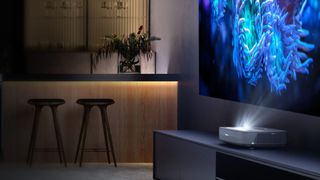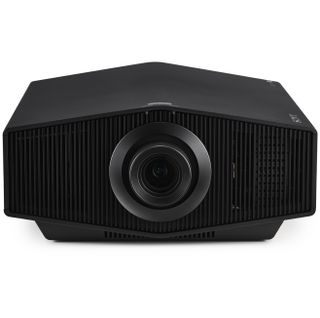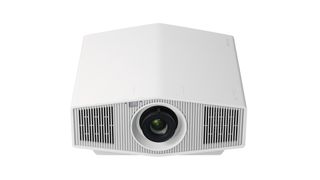
1. The list in brief
2. Best overall
3. Best entry-level
4. Best high-end
5. Best ultra short throw
6. Also consider
7. How to choose
8. How we test
While TVs are getting bigger and bigger, no TV can truly rival a projector when it comes to delivering a proper home theatre experience. Projecting a 100-inch image will deliver cinema-like results in most cases – providing you have a good projector of course.
While there are quite a number of models to choose from currently, not all of them are worth your investment, so we've taken the liberty of collecting the best models that we've tried, tested and given our seal of approval. Every model on this list has been put through a rigorous testing process by our expert team, with a major focus on picture performance.
We feel like this is the most important aspect of any good projector, hence why we have prioritised it. A lacklustre built-in sound system can always be remedied by an AVR and surround sound speaker package, and a missing smart platform can be substituted for a media streamer – however, a substandard picture cannot be fixed quite as easily.
You'll find everything from premium beamers to budget options ideal for those taking their first steps into the world of home cinema, and even an ultra-short throw projector that could be the perfect TV replacement. Scroll down to view our favourite projectors on the market now.
The quick list
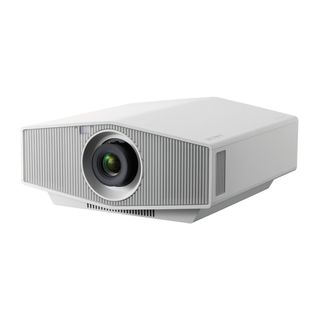
Best overall
Putting laser technology within reach of mere mortals, Sony’s VPL-XW5000ES delivers a stunning 4K picture without ever having to replace a lamp.
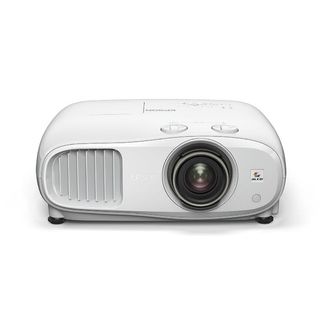
Best entry-level
It's not the cheapest entry-level option out there, but the Home Cinema 3800’s picture out-punches the outlay, with a list of features that will fulfil your dreams.
Load the next product ↓
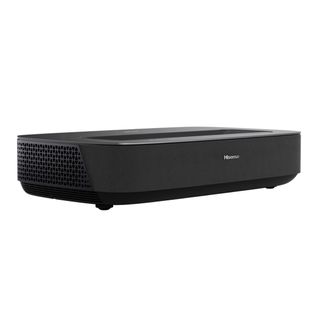
Best ultra short throw
Hisense's sharp and punchy UST makes for a compelling 100-inch TV alternative.

I've tested nearly every form of projector during my tenure as a staff writer at What Hi-Fi?. That includes long throw, short throw and ultra short throw units, as well as the occasional portable unit here and there. After using everything from high end units that cost well over 10 grand, to budget beamers that cost less than a tenth of that, I'm certainly able to deduce what makes a quality projector.
Recent updates
13th May 2024: Swapped the LG CineBeam HU715Q out for the Hisense PL1 due to the Hisense beating the LG at our yearly Awards. Also added further options under the "also consider" tab and an F.A.Q section.
Below you'll find lengthier introductions to each of these projectors, with links to our full in-depth reviews of every model.
The best projector overall

The VPL-XW5000ES is a watershed moment for not just Sony’s projection business but the home cinema world in general. Why? Because it’s the cheapest truly native 4K laser projector the home cinema world has ever seen.
Prior to the XW5000ES, Sony’s entry-level SXRD 4K projectors – such as last year’s VW290ES (VW325ES in the US) – have relied on lamp rather than laser technology. Moving to laser, though, means no longer having to put up with the inconvenience and ongoing costs associated with having to replace lamps every few thousand hours of use, or the relatively rapid degradation in brightness that lamps suffer.
While you inevitably have to accept a compromise or two in return for Sony delivering a full 4K laser projector at this price, those compromises are ultimately crushed by the joyous impact the XW5000ES’s combination of laser lighting and exceptional X1 Ultimate processing has on both your immediate and long-term movie night thrills.
Read the full Sony VPL-XW5000ES review
The best entry-level projector

It's a shade pricey for an entry-level device but, make no mistake, the Epson Home Cinema 3800 (known as the EH-TW7100 in the UK) is the king of affordable 4K projectors. It’s easy to set up and install, and produces a picture that’s reminiscent of what you'll get at the cinema.
You'll get a great image right out of the box without needing to be any kind of expert at tinkering with the settings. All the preset modes are very well judged and it gives an excellent level of black depth and dark detail for a projector at this price. Colors are balanced and motion is naturally smooth.
That said, it's as much the convenience of this machine that makes it so good. Bluetooth allows for direct connection with a wireless speaker or soundbar, and the high luminance means that it's usable in moderately lit rooms. In other words, an AVR, speaker package and home cinema room are not entirely necessary. How's that for a superb family projector?
Read the full review: Epson Home Cinema 3800 (EH-TW7100)
The best high-end projector
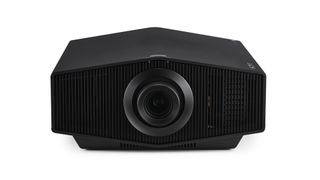
Sony is taking no prisoners with its native 4K laser projectors, with the VPL-XW7000ES being the higher-end of the two models.
The Sony VPL-XW7000ES takes everything up a notch, pushing brightness up to 11 and featuring a more comprehensive set of motorized lens controls. Its native 4K resolution and notably, high lumen count should catch the eyes of those looking for a flashy projector that will have people talking about the device as much as the content that's being watched on it.
The Sony VPL-XW7000ES consistently received involuntary verbal reactions of “wow” and “can you believe how good this looks?” throughout our testing. The brightness surpasses the gimmicky branding that many would expect, and the details are razor sharp.
Read the full Sony VPL-XW7000ES review
The best ultra short throw projector
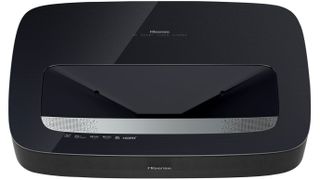
Hisense has been pioneering ultra short throw projectors for a while now with its laser TV and laser cinema lines. While it's not the only brand on the market to deliver these space-saving, large-screen TV alternatives (Samsung, LG and Epson are all hot on its heels), it has delivered a diverse range of UST projectors.
Interestingly, it's the cheapest model in the range that caught our attention. The PL1 undercuts practically every alternative when it comes to price, which is all well and good providing it delivers a quality picture and sound performance. Thankfully, the PL1 lives up to expectations in this regard.
It produces a sharp, vibrant and engaging picture that's easily enjoyed. The PL1 is also a dab hand where contrast is concerned, meaning that the image produced is loaded with three-dimensional impact. This has a positive effect on dark details too, as the PL1 delivers solid black depths while retaining details in shadowy scenes.
Sound-wise, the Hisense is good, but by no means exceptional. This is to be expected, so we're reluctant to punish it; ultimately, it's clear enough for watching daily TV and it even attempts some directional sound when watching movies. However, you're probably going to want to pair this beamer with a Dolby Atmos soundbar.
What you won't need is a separate streaming stick or box. The PL1 comes with Google TV baked in, meaning all of your favourite apps are available to stream directly from the main unit. Netflix, Amazon Prime Video, Disney Plus and more are all on board, making things very convenient.
Also consider
- JVC DLA-NZ7: This premium projector rivals the Sony VPL-XW7000ES that can also be found on this list. It delivers a crisp, detailed and supremely natural picture that will impress purists who want the most authentic picture from their projector.
- Hisense C1: This all-in-one cinema in a box solution features an impressively punchy (albeit not entirely accurate) picture, powerful built in JBL speaker system, and Hisense's VIDAA smart streaming platform baked in.
- Samsung The Premiere LSP9T: This premium ultra short throw model makes a convincing case for ditching your TV in favour of a projector. Anyone familiar with a Samsung TV will feel right at home with Samsung's Tizen smart system, while the bright, colourful picture and well projected sound seal the deal on this UST beamer.
How to choose the best projector for you
There are a multitude of factors to consider when choosing the right projector to suit your needs. Whether its budget, resolution, screen size or even the type of lamp, all of these factors can drastically alter the performance of a projector.
It's important to recognise the differences between projector lamp technologies, as different options give you different performance. Laser-based projectors are quick to reach optimal performance after booting up, they produce more accurate colours and have longer lifespans due to not requiring a bulb to power the picture. However, they tend to be more expensive than DLP (Digital Light Processing) LED and LCD projectors, which in turn have their own benefits and caveats.
Ultimately, the goal with a projector is to encapsulate the cinematic feeling of a movie theater at home, so this is where screen size and resolution are important. Ideally, this is where a 4K projector would be best for crisp and clear visuals. As you'll notice, all of our top picks are either native 4K projectors, or achieve a 4K-like image through clever trickery for a higher picture quality.
While resolution is a pivotal aspect of the picture quality, its almost equally important counterpart is colour. Projectors can often struggle when it comes to colour, especially when it comes to darker shades. Contrast is key here to ensure that black depth is the best it can be, although no projector will be able to live up to an OLED TV in this regard.
Within the mix are also some ultra short throw projectors. These can project a big, clear image onto a wall from a very short distance away, making them ideal for space-saving set ups or for those wanting to avoid wall- or ceiling-mounting their projector.
Then there are portable projectors, which are ideal of taking on the go or using outside to create a grab-and-go cinema experience. They might not match up with the performance of dedicated home cinema projectors – the fact that none have made our list should tell you that – but you're paying for the experience and versatility here. You can't beat an open-air cinema experience under the starry night sky after all.
We do often recommend that you budget for a speaker when shopping for a projector, as although many options here include on-board speakers, they are invariably pretty poor. Similarly, while some projectors do now feature built-in streaming platforms, they're often a bit patchy in terms of performance and app selection, so it's often worth keeping some cash aside for a dedicated streamer.
How we test projectors
Testing projectors involves taking the time to explore their capabilities fully through lots of options-tweaking and content-watching. This includes checking every item in the settings menu, and individually tweaking picture features to ensure the projector is giving us the best visual performance it can.
We conduct these tests in our state of the art testing room in Bath, which is outfitted with a 100-inch screen and a plethora of external sources to hook the projectors up to, including 4K Blu-ray players, video streamers and games consoles. This is also where each of these projectors meets its rivals, as every product is tested side-by-side with the competition to ensure it meets expectations and so that its place in the market is considered as a whole – no product exists in a vacuum after all.
We test using a wide range of content from 4K Blu-rays, to streaming services, video games and standard definition DVDs to make sure all kinds of content are put through these projectors. This helps us find the strengths and weaknesses of each projector.
At the end of this process, a verdict is reached by a team of reviewers who work closely together in order to ensure that each projector is tested fairly, and to avoid the possibility of any personal preferences creeping in. This is also to make sure our reviews are consistent and thorough, and so that no feature or flaw is missed within our testing process.
F.A.Q
Should I get a laser or lamp projector?
Why you can trust What Hi-Fi?
All models on this list use a laser light source, as we find most manufacturers are using this over traditional bulb light sources. The benefits include more vivid colours and better image quality (in most cases), lower power consumption, near instant boot up time and greater longevity.
What's the difference between native 4K and pixel shifting 4K?
A lot of projectors claim they feature a 4K resolution image, but not all 4K projectors are created equally. Some projectors have what's known as a "native 4K resolution", meaning they output around 8 million pixels directly from the chipset with no additional processing. Examples of this include both Sony units on this list, as they both output the full 4K resolution by reproducing each pixel individually.
Other projectors achieve a 4K resolution via a process known as "pixel shifting" – although different manufacturers usually have their own term for this technology. This involves projecting two Full HD (1920 x 1080) versions of the picture with the pixels shifted slightly to the side (hence the name) which, in theory, delivers a 4K 3840 x 2160) image.
There are pros and cons to both, but the bottom line is that native 4K almost always looks more authentic and sharper, however, units that support this tend to be more expensive.
Do I need a screen?
If you want to get the very best performance out of your projector, you're going to want a good screen. While a white wall will work if needed – and many manufacturers include automatic calibration modes to allow users to project on to different colour walls now – a quality screen will always provide the best performance.
If you can track down a high gain screen, then you'll be rewarded with a brighter picture that can better combat ambient light, or opt for a low gain screen if you plan on using your projector in a dedicated home theatre room with controlled lighting – as these provide better viewing angles and a more even picture.
MORE:
These are the best surround sound speaker systems
Take a look at the best home cinema deals
